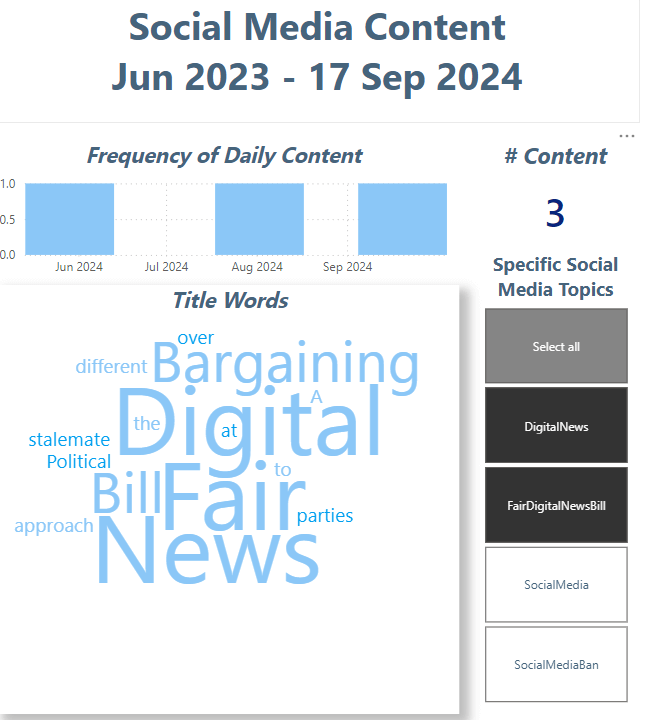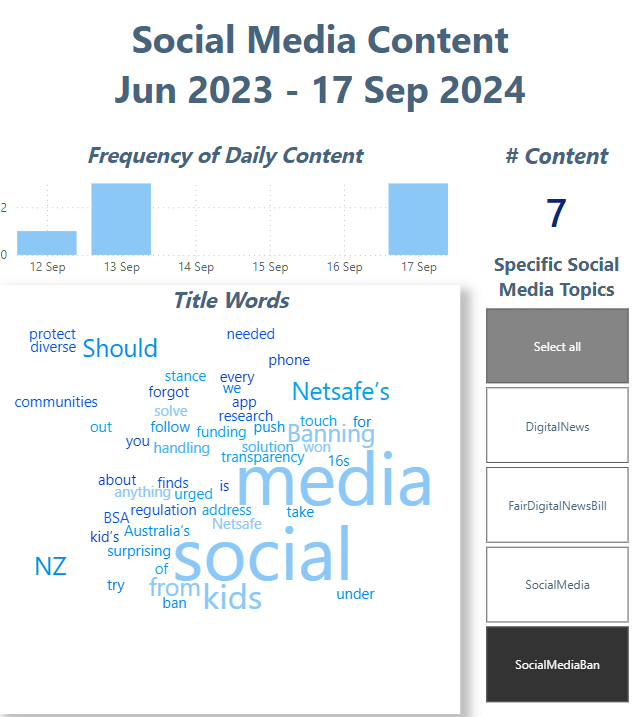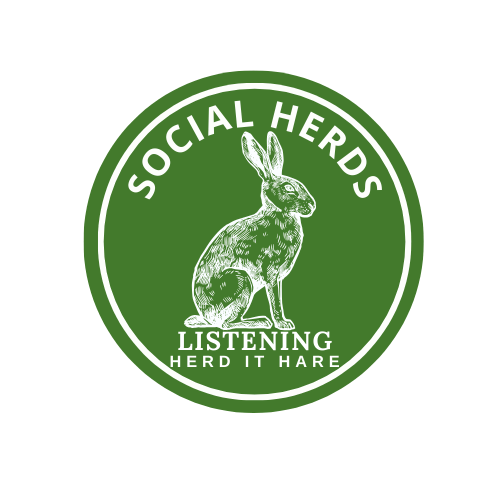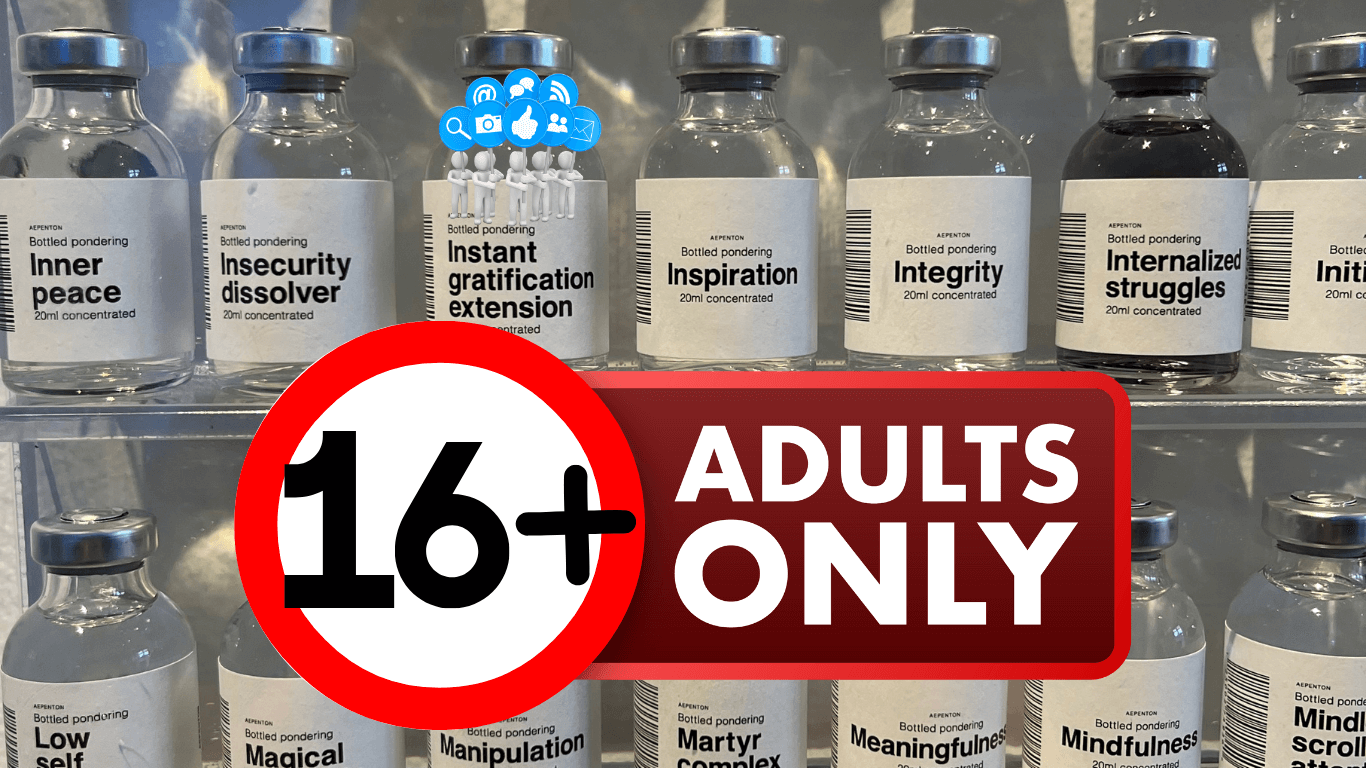Social Media
Fair News Bargaining
Since the announcement of Newshub’s closure in late February, there has been a steady stream of articles discussing the impact of social media on traditional media. Social media not only appropriates content created by professional journalists but also presents it in a potentially misleading and biased manner – threatening the credibility of professional media organisations.

Social Media: Mental Health and Youth
Over the last few weeks, there has been an increase in the number of media articles proposing that children 16 years and under are banned from social media because of the harm it causes.
One of the most cited reports in galvanising action is the 2023 report from the U.S. Surgeon General. It highlights the mental health risks associated with social media use among children and adolescents. The addictive nature of platforms, fuelled by dopamine-driven feedback loops, makes younger individuals particularly vulnerable. The adolescent brain’s sensitivity to social rewards and affirmation can create a dependency on the likes, comments, and validation that social media delivers.
Banning social media for those under 16 is an interesting proposal. While this solution addresses the root concern of exposure to potentially harmful content, it might be overly restrictive for some. There’s an argument for teaching critical thinking and media literacy instead. Empowering youth to evaluate content could help them develop resilience, giving them the tools to navigate an increasingly complex digital landscape.

Traditional Media: Influence and Manipulation
Whether traditional or social, the media frequently crafts content that taps into our emotional responses. Take, for example, an article published this week: How was violence against bus drivers allowed to become such a problem? (Newstalk ZB.co.nz)
This heading grabbed my attention. My first query was how many bus drivers have been attacked. I got to the end of the article but still don’t know. Here are the ‘facts’ as reported by Kerre Woodham
Fact Assessment
| Critical Thinking Pathway | Article Content |
| What is the problem |
|
| Is it a ‘one of incident’ – No |
|
| So… how much of a problem |
|
| Why is there a problem |
|
| Where is it occurring |
|
| What can be done |
|
| To summarise |
|
Do I understand this correctly? The so-called bad eggs – those that have so much money spent are those people who are on the fringes of society with mental health and drug and alcohol issues. Is this an actual fact?
The example of Kerre Woodham’s piece illustrates how headlines or the framing of stories can stir strong reactions without necessarily providing hard data. Such emotional engagement can be addictive, even for adults, much like the dopamine-seeking behaviour observed in younger social media users.
While adults typically have a more developed prefrontal cortex, enabling better regulation of emotions, they are not immune to emotionally charged or populist reporting. The appeal of stories that pit “undeserving” individuals against the “deserving” taps into common societal concerns and can provoke visceral reactions.
These narratives often resonate because they reinforce pre-existing biases or touch on anxieties about fairness and resource distribution. They should, of course, be for those over 16 years, it’s adult content.

